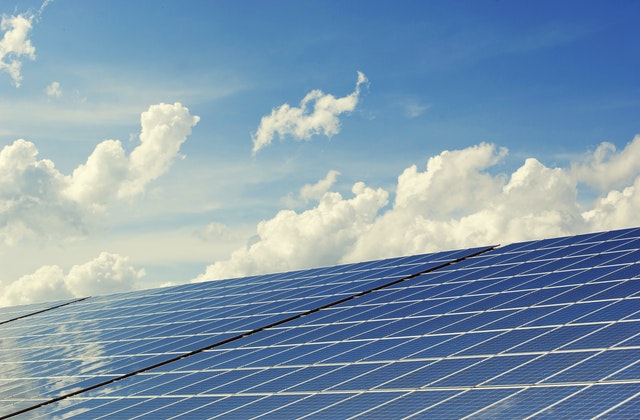As the cost of energy continues to rise, more and more people are looking for ways to make their homes more energy-efficient. If you’re one of those people, you’ll want to check out these 20 tips from our solar company. We’ve got everything from installing solar panels to making your home airtight. So, what are you waiting for? Start saving money today!
1. Get a home energy audit
If you want to save money on your energy bills, the first place to start is with a home energy audit. This will help you identify areas where your home is losing energy and what improvements you can make to increase efficiency. Many utility companies offer free or discounted audits, so be sure to check with yours to see what’s available.
2. Install solar panels
One of the best ways to reduce your energy consumption is to install solar panels. Solar panels absorb sunlight and convert it into electricity, which can then be used to power your home. Not only will this save you money on your energy bills, but you’ll also be doing your part to reduce your carbon footprint.
3. Upgrade your insulation
If your home isn’t properly insulated, you’re losing energy through the walls, ceilings, and floors. Upgrading your insulation is a relatively inexpensive way to make your home more energy-efficient and can save you hundreds of dollars each year on your energy bills.
4. Replace your windows
Windows are one of the main sources of heat loss in a home, so if your windows are old or damaged, you may want to consider replacing them. New windows can help reduce energy consumption by up to 30%.
5. Caulk and weatherstrip your doors and windows
Another way to reduce heat loss is by caulking and weatherstripping your doors and windows. This will create a seal around your doors and windows, preventing heat from escaping.
6. Use energy-efficient light bulbs
One of the easiest ways to reduce your energy consumption is to switch to energy-efficient light bulbs. These bulbs use less electricity than traditional incandescent bulbs and can last up to 10 times longer.
7. Install a programmable thermostat
A programmable thermostat can help you save money on your energy bills by automatically adjusting the temperature of your home when you’re not there. For example, you can set it to lower the temperature when you’re away at work or asleep.
8. Seal ducts and vents
If your home has ducts and vents, be sure to seal them to prevent heat loss. Duct tape is a great option for this, and you can find it at most hardware stores.
9. Use a ceiling fan
Ceiling fans can help circulate air in your home and make it feel cooler without actually lowering the temperature. This can save you money on your energy bills during the summer months.
10. Reduce water heater temperatures
Water heaters use a lot of energy, so reducing the temperature can help save you money on your energy bills. Most water heaters come with a pre-set temperature, but you can usually adjust it yourself. Just be sure not to set it too low, or you may not have enough hot water for your needs.
11. Install low-flow fixtures
Low-flow fixtures, such as showerheads and faucets, can help reduce water consumption without sacrificing performance. This is a great way to save money on your water bill and protect our natural resources.
12. Use energy-efficient appliances
When it’s time to replace your old appliances, be sure to choose energy-efficient models. These appliances use less electricity than their traditional counterparts and can save you money on your energy bills each month.
13. Unplug unused electronics
Did you know that even when they’re turned off, electronics continue to consume power? To save energy and money, unplug any electronics that you’re not using.
14. Use a power strip
If you have multiple electronics plugged into one outlet, consider using a power strip. This will allow you to easily turn off all of your electronics with the flip of a switch, which can save you money on your energy bills.
15. Adjust your refrigerator temperature
Your refrigerator is one of the biggest consumers of energy in your home, so it’s important to keep it at the right temperature. The ideal setting is between 37- and 40-degrees Fahrenheit.
16. Defrost your freezer regularly
Frost buildup in your freezer can prevent it from working properly, which means it has to work harder and use more energy. To prevent this, defrost your freezer regularly.
17. Clean your refrigerator coils
Dirty refrigerator coils can cause your fridge to use more energy than necessary. To keep your coils clean, vacuum them regularly with the brush attachment of your vacuum cleaner.
18. Use a slow cooker
Slow cookers are a great way to save energy because they use less electricity than traditional ovens. Plus, they’re perfect for cooking large meals that you can then enjoy throughout the week.
19. Hang dry your clothes
Hanging your clothes to dry is a great way to save energy and money. Clothes dryers use a lot of energy, so hanging your clothes to dry whenever possible can help reduce your energy consumption.
20. Wash your clothes in cold water
Washing your clothes in cold water can save you money on your energy bills. Most detergents work just as well in cold water as they do in hot, so there’s no need to use hot water unless you’re dealing with particularly tough stains.




























